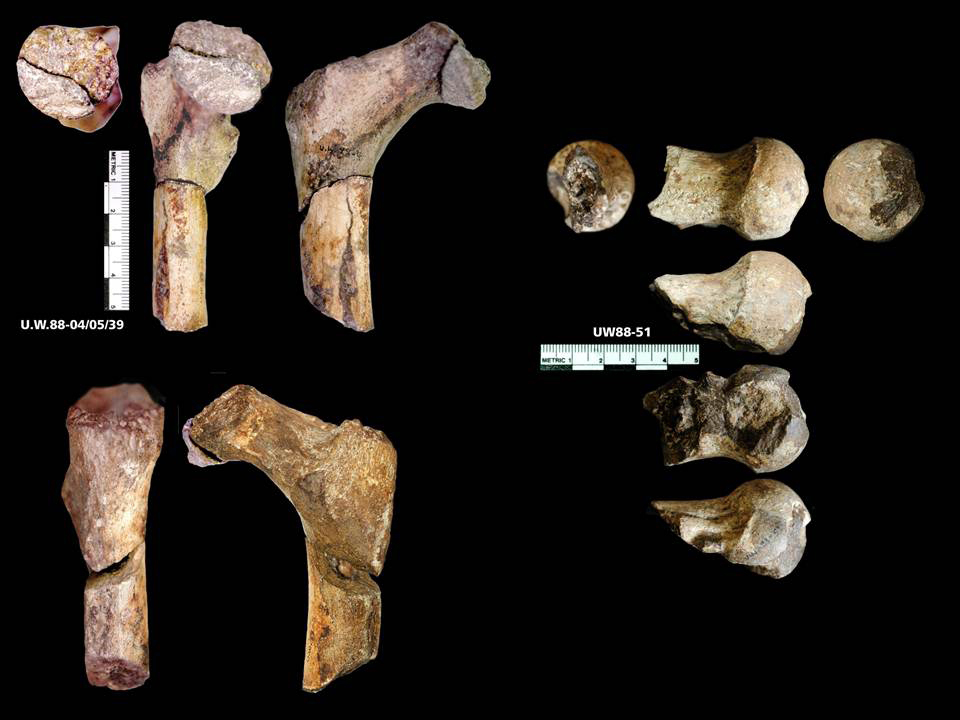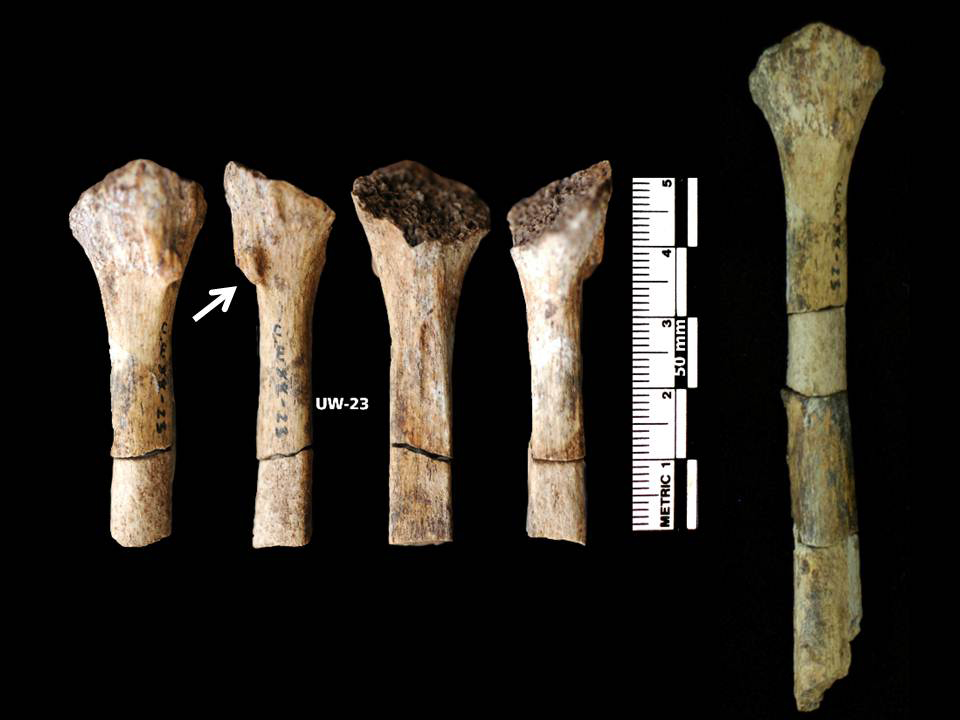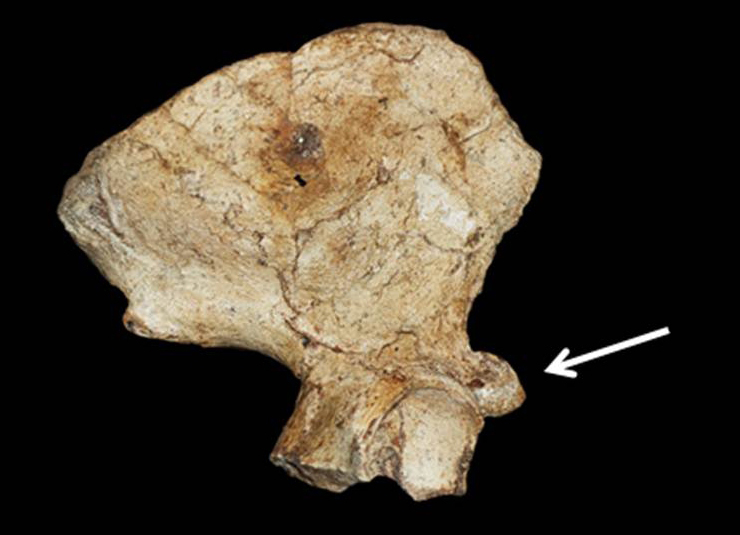Au. Sediba Gallery: Anatomy of Humanity's Closest Relative
Unique walker

Various views of a femur bone of Au. sediba, including from the young male skeleton (left) and the female skeleton (right). The researchers found the legs of Au. sediba suggested it moved in an entirely new way. (This image specifically relates to the paper by DeSilva et al.)
Mix it up

The tibia leg bone and kneecap (patella) of Au. sediba. Researchers found that its small heel resembled that of a chimp's, hinting it probably walked with an inward rotation of the knee and hip, with its feet slightly twisted. This primitive method of walking might have been a compromise between tree-climbing and upright walking.
Pigeon-Toed?

Here, various views of the fibula of the female Au. sediba skeleton. Notice a bony outgrowth (arrow), which the researchers hypothesize is an indication that this muscle was overstrained during the hyperpronating gait of Au. sediba. (This image specifically relates to the paper by DeSilva et al.)
Pelvic bone

The ilium (upper pelvic bone) of the female Au. sediba skeleton. Researchers found a projection, called an iliac spine, on the iliac bone, which is the upper crest or "wings" on the pelvic girdle.
Get the world’s most fascinating discoveries delivered straight to your inbox.



